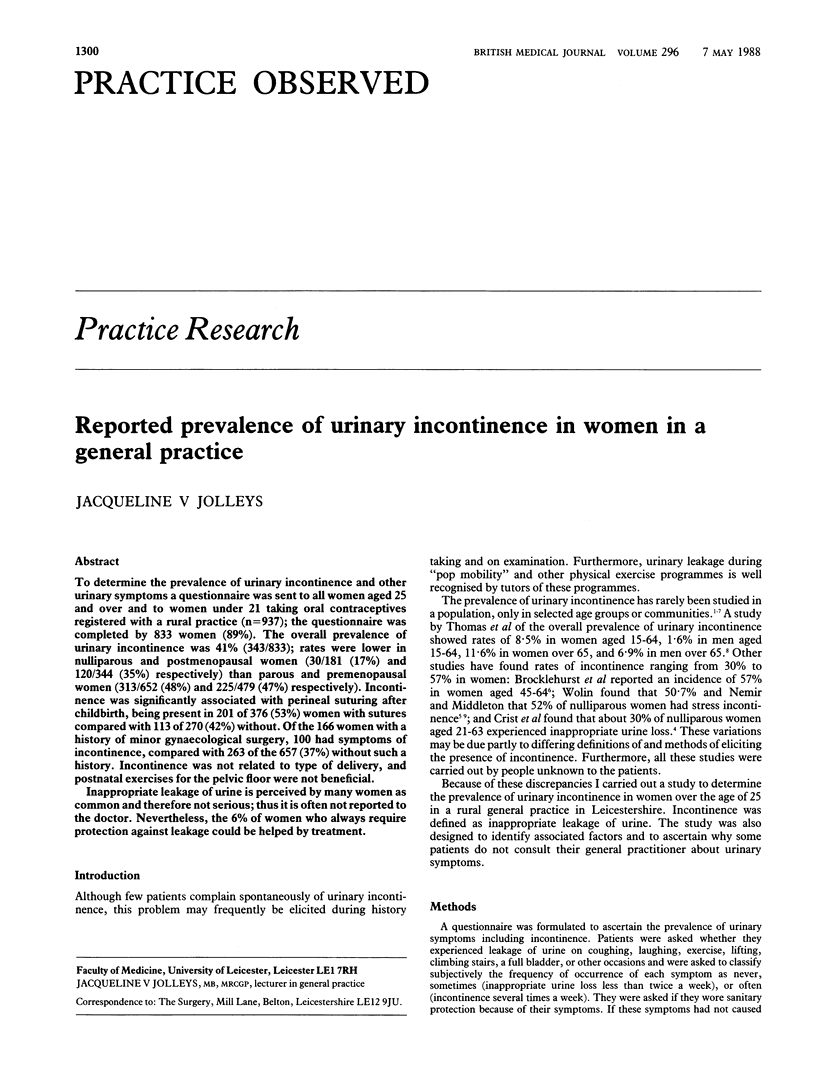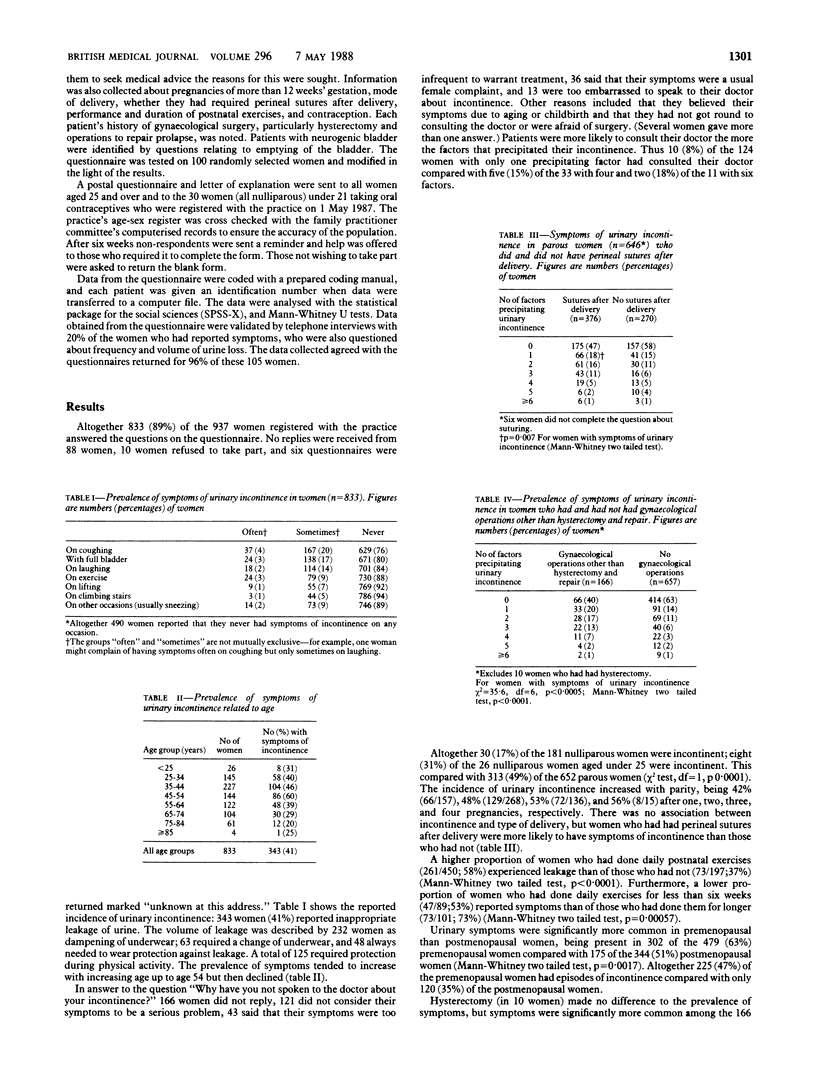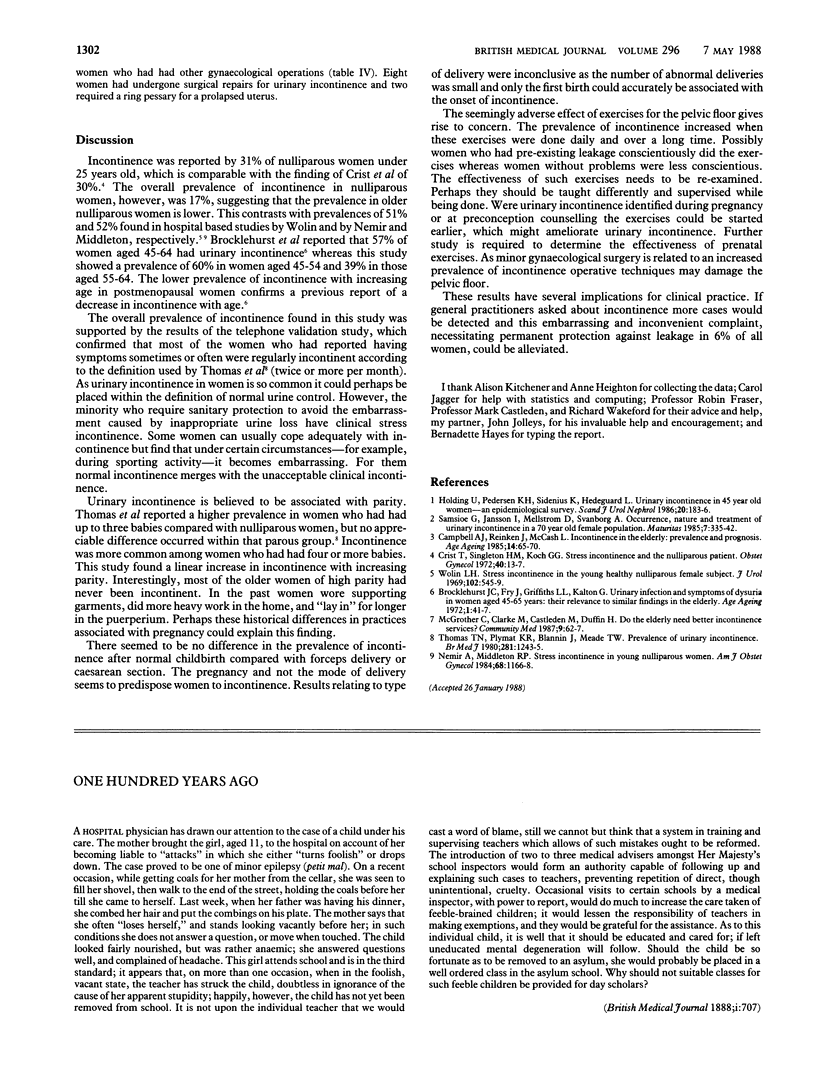Abstract
To determine the prevalence of urinary incontinence and other urinary symptoms a questionnaire was sent to all women aged 25 and over and to women under 21 taking oral contraceptives registered with a rural practice (n=937); the questionnaire was completed by 833 women (89%). The overall prevalence of urinary incontinence was 41% (343/833); rates were lower in nulliparous and postmenopausal women (30/181 (17%) and 120/344 (35%) respectively) than parous and premenopausal women (313/652 (48%) and 225/479 (47%) respectively). Incontinence was significantly associated with perineal suturing after childbirth, being present in 201 of 376 (53%) women with sutures compared with 113 of 270 (42%) without. Of the 166 women with a history of minor gynaecological surgery, 100 had symptoms of incontinence, compared with 263 of the 657 (37%) without such a history. Incontinence was not related to type of delivery, and postnatal exercises for the pelvic floor were not beneficial.
Inappropriate leakage of urine is perceived by many women as common and therefore not serious; thus it is often not reported to the doctor. Nevertheless, the 6% of women who always require protection against leakage could be helped by treatment.
Full text
PDF


Selected References
These references are in PubMed. This may not be the complete list of references from this article.
- Campbell A. J., Reinken J., McCosh L. Incontinence in the elderly: prevalence and prognosis. Age Ageing. 1985 Mar;14(2):65–70. doi: 10.1093/ageing/14.2.65. [DOI] [PubMed] [Google Scholar]
- Crist T., Singleton H. M., Koch G. G. Stress incontinence and the nulliparous patient. Obstet Gynecol. 1972 Jul;40(1):13–17. [PubMed] [Google Scholar]
- Hørding U., Pedersen K. H., Sidenius K., Hedegaard L. Urinary incontinence in 45-year-old women. An epidemiological survey. Scand J Urol Nephrol. 1986;20(3):183–186. doi: 10.3109/00365598609024491. [DOI] [PubMed] [Google Scholar]
- McGrother C. W., Castleden C. M., Duffin H., Clarke M. Do the elderly need better incontinence services? Community Med. 1987 Feb;9(1):62–67. doi: 10.1093/oxfordjournals.pubmed.a043907. [DOI] [PubMed] [Google Scholar]
- NEMIR A., MIDDLETON R. P. Stress incontinence in young nulliparous women; a statistical study. Am J Obstet Gynecol. 1954 Oct;68(4):1166–1168. doi: 10.1016/s0002-9378(16)38416-2. [DOI] [PubMed] [Google Scholar]
- Samsioe G., Jansson I., Mellström D., Svanborg A. Occurrence, nature and treatment of urinary incontinence in a 70-year-old female population. Maturitas. 1985 Nov;7(4):335–342. doi: 10.1016/0378-5122(85)90057-x. [DOI] [PubMed] [Google Scholar]
- Thomas T. M., Plymat K. R., Blannin J., Meade T. W. Prevalence of urinary incontinence. Br Med J. 1980 Nov 8;281(6250):1243–1245. doi: 10.1136/bmj.281.6250.1243. [DOI] [PMC free article] [PubMed] [Google Scholar]
- Wolin L. H. Stress incontinence in young, healthy nulliparous female subjects. J Urol. 1969 Apr;101(4):545–549. doi: 10.1016/s0022-5347(17)62378-4. [DOI] [PubMed] [Google Scholar]


